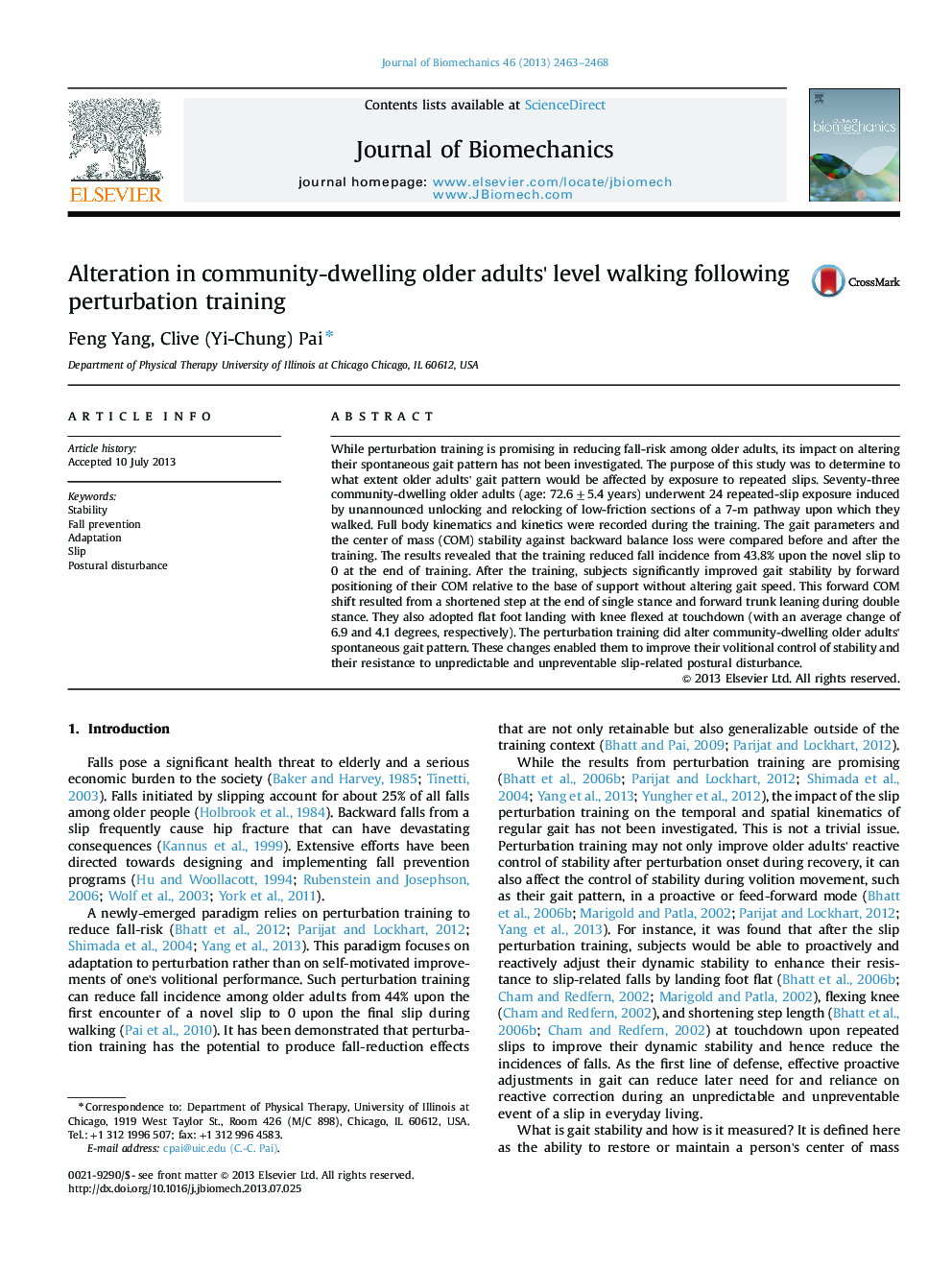| Article ID | Journal | Published Year | Pages | File Type |
|---|---|---|---|---|
| 10432489 | Journal of Biomechanics | 2013 | 6 Pages |
Abstract
While perturbation training is promising in reducing fall-risk among older adults, its impact on altering their spontaneous gait pattern has not been investigated. The purpose of this study was to determine to what extent older adults' gait pattern would be affected by exposure to repeated slips. Seventy-three community-dwelling older adults (age: 72.6±5.4 years) underwent 24 repeated-slip exposure induced by unannounced unlocking and relocking of low-friction sections of a 7-m pathway upon which they walked. Full body kinematics and kinetics were recorded during the training. The gait parameters and the center of mass (COM) stability against backward balance loss were compared before and after the training. The results revealed that the training reduced fall incidence from 43.8% upon the novel slip to 0 at the end of training. After the training, subjects significantly improved gait stability by forward positioning of their COM relative to the base of support without altering gait speed. This forward COM shift resulted from a shortened step at the end of single stance and forward trunk leaning during double stance. They also adopted flat foot landing with knee flexed at touchdown (with an average change of 6.9 and 4.1 degrees, respectively). The perturbation training did alter community-dwelling older adults' spontaneous gait pattern. These changes enabled them to improve their volitional control of stability and their resistance to unpredictable and unpreventable slip-related postural disturbance.
Related Topics
Physical Sciences and Engineering
Engineering
Biomedical Engineering
Authors
Feng Yang, Clive (Yi-Chung) Pai,
